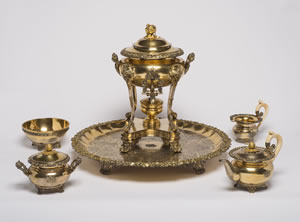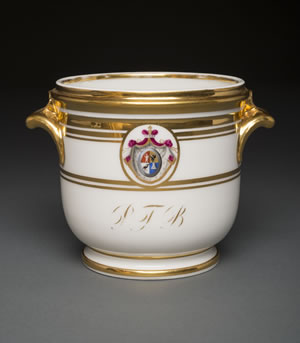The Things Inside Case No. 8
In last week’s blog we got to know a little more about the American Museum’s naturalist and taxidermist, Monsieur Emile Guillaudeu, a man whom Barnum valued and trusted. Having traveled on the outbound voyage to England with P. T. Barnum and the Strattons (Gen. Tom Thumb and his parents) in January of 1844, he returned to New York City in the summer of 1845, after Tom Thumb and his entourage finished performing in Paris and were going on to other cities and towns.
A few of Barnum’s copybook letters mention getting “birds eyes” for Guillaudeu—meaning taxidermists’ glass eyes for use in mounting skins. (Presumably French-made birds eyes were the best quality.) Upon purchasing them, Barnum shipped them to New York, tucked in among his own possessions. Twice he stated that the birds eyes were put in “case No. 8,” so that Guillaudeu—or museum manager Fordyce Hitchcock—would know where to find them. Very likely the “case” was more on the order of a shipping crate. But I have to tell you that Mon. Guillaudeu is not the only one with a great interest in case No. 8. I, too, am dying to poke around inside that crate, albeit in my imagination. Actually, there’s more than inquisitiveness involved in my desire—this is curatorial research!
Some of the very items the Barnum Museum has in its collection, given by Barnum descendants, were purchased by him in Paris during this tour and sent home to America. It so happened that while Barnum was in Paris, the estate of a Russian prince who had lived in that city and recently passed away was put up for auction. Curiosity and an abundance of spare cash drew Barnum to the auction, where he acquired many exquisite treasures for the home he planned to build in Bridgeport. Since the Royal Pavilion in Brighton was to serve as a model for his home-to-be, he undoubtedly felt that its décor should reflect the aesthetic of wealthy Europeans. Initially I had high hopes of reading about Barnum’s purchases in the copybook, but since the letters in that volume begin after Barnum left Paris, I soon realized I had “missed” the auction. Darn.
That said, we do know something about the auction from another source. Were it not for the coat of arms on some of the prince’s possessions, however, we might not have learned the story behind Barnum’s purchases, included in the book Funny Stories told by Phineas T. Barnum (see pages 245 – 246). The auction, held in the palatial home of the late prince, attracted the wealthy and elite of Paris and London, who were eager to acquire rare and costly items. But when it came to bidding on items ornamented with the coat of arms, well . . . they were no longer so eager. After all, why would they, who had their own family crests, want to possess objects displaying another’s heraldry?
As the story goes, Barnum thereupon seized the opportunity to purchase the fine items of silver, gold and porcelain so decorated, as he did not have a coat of arms and was not averse to “adopting” one. Having grown up in the conservative, plain-living town of Bethel, Connecticut, Barnum’s exposure to the grandeur of royalty and the aristocracy in England, Belgium and France, had certainly awakened a taste for lavish interiors and furnishings. And he surely calculated that American visitors to his home would hardly care whose coat of arms adorned his china and silver, only that it was very impressive and European. (Barnum even went so far as to put the coat of arms on his own carriage!)
Back to “case No. 8” where, Barnum noted, “The birds eyes for Guillaudeu were put . . . with my plated dinner service.” Now that’s what I am interested in! I have to believe that some of the items in that crate—and the others—were the very pieces now in the museum’s collection. So do Barnum’s copybook letters provide any clues about them, post-auction?
A letter dated October 12th tells us about the nuisance of getting the precious acquisitions into the U.S. Somewhat apologetically Barnum wrote to Hitchcock,
I am sorry that my things have given so much trouble to you and the custom house. I gave the list of contents just as the man who packed them in Paris gave them to me. However there could be no error about the cost of the things for I sent you the bills of the most of them, indeed of all which were of any consequence. My cases were shipped about 1st July & I supposed they reached America & passed the custom house by middle of August. Most of the stuff was second handed and ought not to have paid duty. How much duty did you pay?
Suddenly all the beautiful treasures became “second-hand goods!” I guess he was right, even if that isn’t how we think of them today, nor likely did he. Barnum explained,
The fact is I bought my stuff mostly at auction and at different days as the Bills show—then it was all stowed away in the hotel at Paris—most of it was regilded & repaired and returned to the hotel. The packers then went to work and packed it I fear without any regard to the bills or anything except the safety of the articles. Still they told me they were packed just as I wrote you.

So there are a couple of things to unpack—pardon the pun—in Barnum’s statements above. His mention of the regilding (re-application of a thin gold layer) and repair of items is notable. The “gold coffee set” that Barnum referred to in Funny Stories is almost certainly the magnificent gilt-silver tea service now at the Barnum Museum, and includes a very large round tray, a samovar for heating water, and a tea pot, creamer, lidded sugar bowl, and waste bowl (for the used tea leaves). Today the exterior surfaces of these pieces appear as a warm silver color, having lost much of the gold, while the interior surfaces display a distinct yellow gold “wash.” Since a gilt-silver surface has only a thin gold overlay, cleaning and polishing wears away the gold over time, and this may also have been the case when Barnum acquired the set in 1845, prompting him to have it regilded.

That seems straightforward enough, but the regilding and repair may also refer to the French porcelain dinner service Barnum bought, which had been made by Dartes Frères (Darte Brothers) in the early 19th century. Each piece of the snow-white china is elegantly decorated with bands of gold and the owner’s initials in gold, as well as the handsome coat of arms. The Barnum Museum has many pieces from this dinner service—though not the entire set. We had long puzzled over the initials “P T B” on each piece. Supposedly the initials of the prince, “P” and “T,” had caught Barnum’s attention, because he would only need to add a B to transform them to his own. However, the fact that the three letters are always perfectly centered on each piece of the dinnerware seemed to discount the story if the change was accomplished by simply adding a letter. The truth of that tale was uncertain. A few years ago we decided to try and find out exactly who this “Russian prince” in Paris was, since Barnum did not mention the man’s name in his story, and we were curious to know if, in fact, the initials were PT.

The Barnum Museum’s former archivist, Meghan Rinn, took on the challenge. She located online the Russian Empire Roll of Arms, published in 1797, and found that the crest seen on “our” china and silver belonged to the Тюфякин family, who held the noble rank of “prince,” the highest rank one could have without being a member of the royal family. In the Roman alphabet the name is written Tioufiakin or Tyufyakin. It turns out that the last member of the family to use the crest was Peter Ivanovich (Пётр Иванович), who lived from 1769 to 1845; he died in February of 1845 with no heirs. He spent the last twenty years of his life living in Paris, opposite the opera house, and he was deeply interested in the theatre and had done much to support it in Moscow. Meg also turned up a catalog for the sale of Prince Tioufiakin’s extensive library and located a couple of paintings with a history of ownership by this man. She did not, however, find an auction catalog of the decorative arts.
I wondered if the original initials on the china were in Cyrillic or the Roman alphabet, but since the dinner service was made in France for a Russian who was making his home in Paris, my guess is the latter. And if the story about the initials catching Barnum’s eye is true, then the latter would have been the case. Whether the regilding and repair of “most of [the items purchased]” refers to both the gilt-silver tea service and the china is hard to say, but it is reasonable to think Barnum would have had the initials on the china changed while in Paris rather than after his return to America.
I find it intriguing—maybe even charming—that Barnum “adopted” a coat of arms that had just become obsolete, and it wasn’t a short-lived whim. He even included it on the very sizeable “California gold” ring he had made at the time of the ’49 Gold Rush. He also added a personally meaningful motto which surrounds the crest, “Love God and Be Merry.” And he went a step further. A coat of arms would traditionally only be applied to something of real value and consequence, but Barnum “democratized” his and shared it with the public! The evidence? The Museum has a Jenny Lind concert ticket made of red cardstock which has the prince’s crest (and Barnum’s motto) embossed in one corner. If only Prince Peter Ivanovich Tioufiakin—who was devoted to supporting the theater and opera—knew that his family crest found a niche in the Swedish soprano’s American concert tour!
Adrienne Saint-Pierre
Barnum Museum Curator

